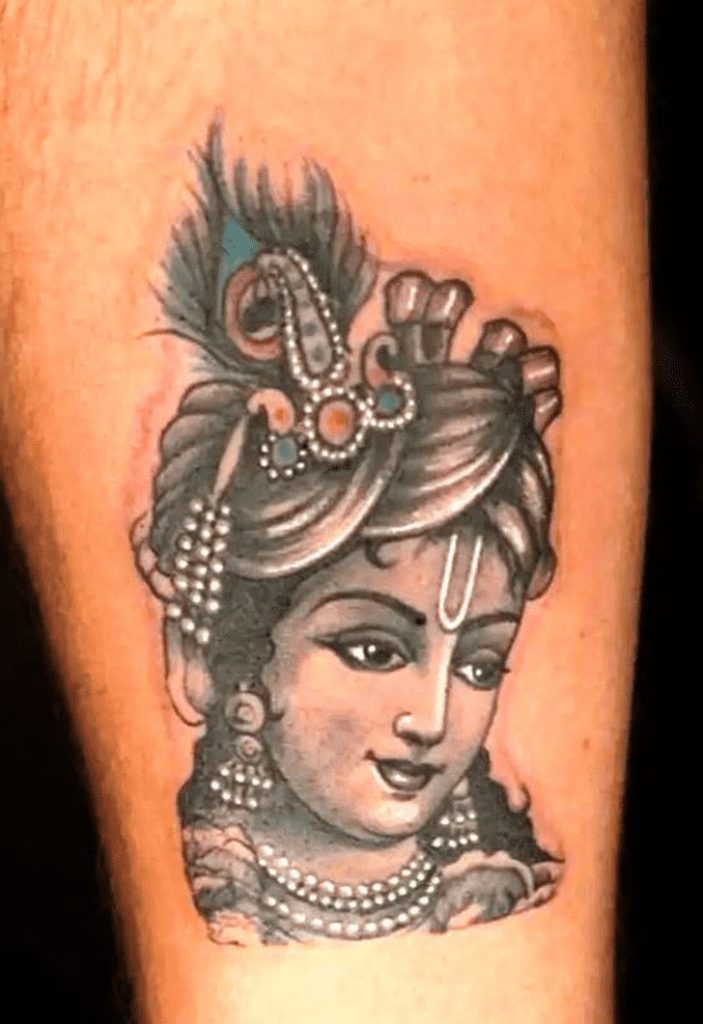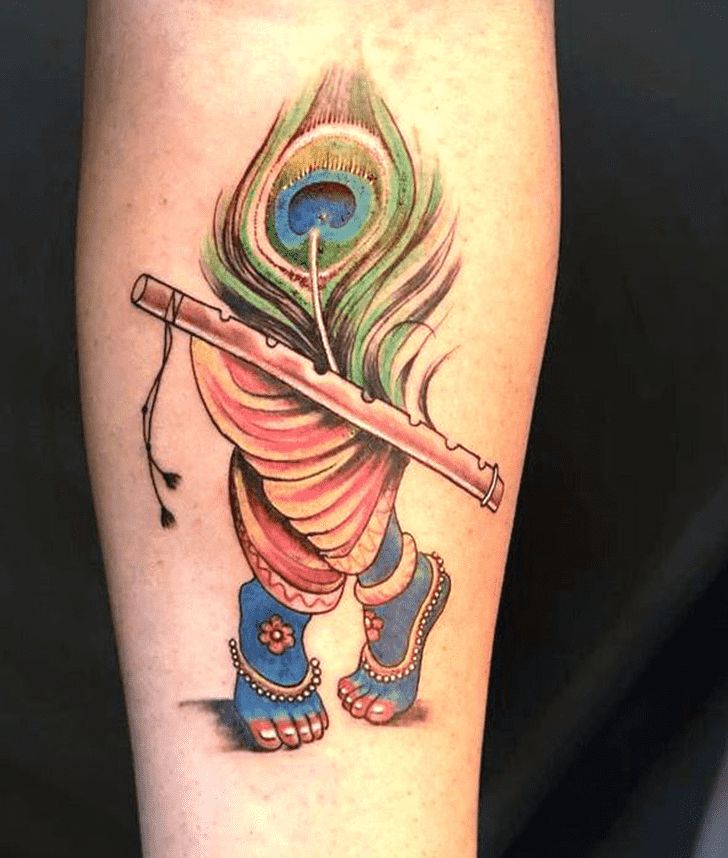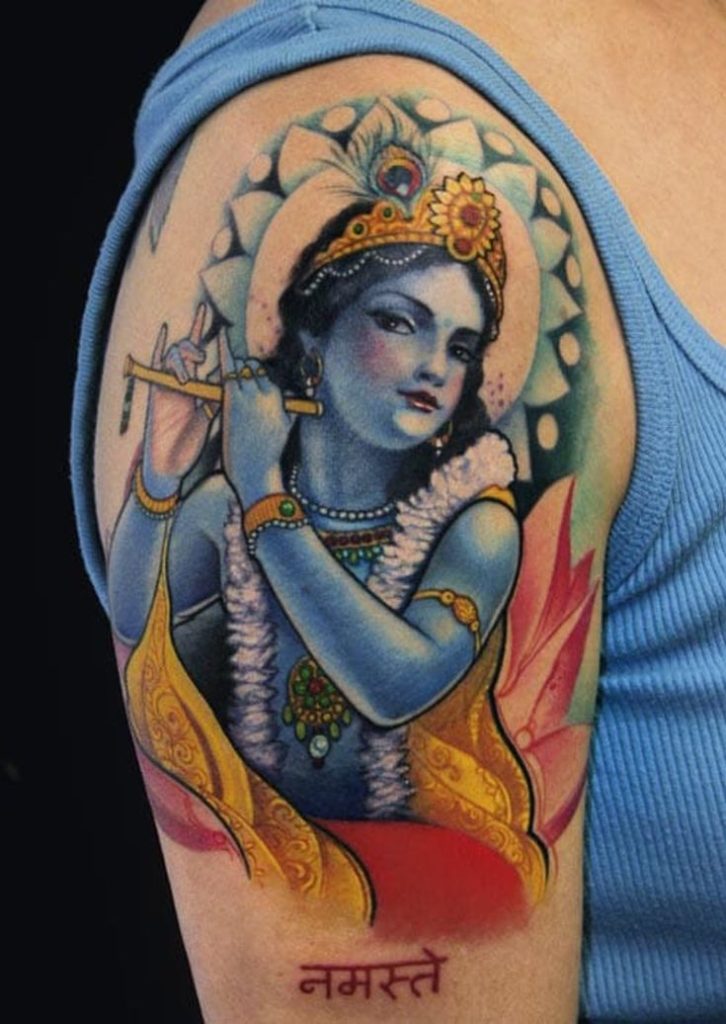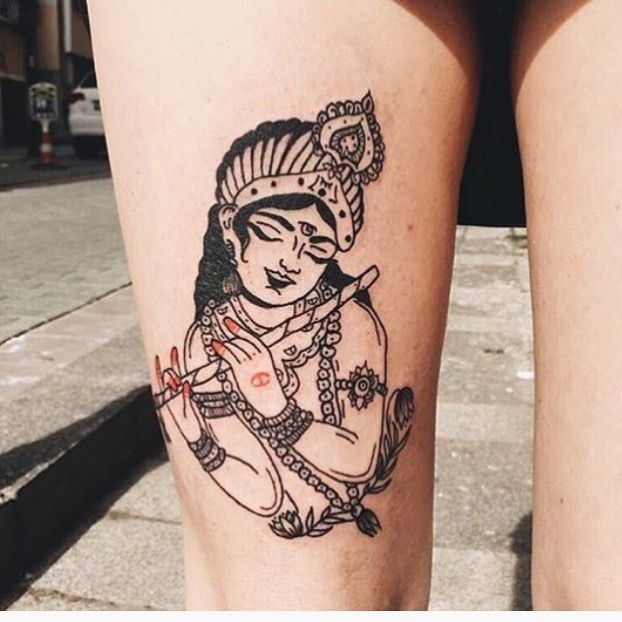
Krishna tattoos have a rich history that reflects the evolution of tattoo art and spiritual symbolism. Originating from the deep reverence for Krishna within Hinduism, these tattoos have evolved over time, incorporating diverse artistic styles and interpretations.
Krishna Tattoos History

Historically, Krishna tattoos have been inspired by traditional Hindu art and iconography. Early depictions often featured Krishna in classical poses, such as playing the flute or dancing with Radha. These traditional designs emphasized intricate details and symbolic elements, capturing the essence of Krishna’s divine attributes.
Read More: Olympic Tattoos: Celebrating the Legacy of the Games
As tattoo art evolved, so did the representation of Krishna. Modern tattoos often blend traditional imagery with contemporary artistic styles, creating unique and visually dynamic designs. Advances in tattoo technology and techniques have allowed for more detailed and colorful depictions of Krishna, making it possible to capture the deity’s intricate features and symbolic elements with greater precision.

The global spread of tattoo culture has also influenced the evolution of Krishna tattoos. As Hinduism gained recognition worldwide, Krishna tattoos began to appear in various cultural contexts, leading to a diverse range of artistic interpretations. This cross-cultural exchange has enriched the design possibilities and broadened the appeal of Krishna tattoos.

Overall, the history and evolution of Krishna tattoos reflect their enduring significance and adaptability. From traditional depictions to modern artistic interpretations, Krishna tattoos continue to be a powerful symbol of devotion, spirituality, and personal expression.